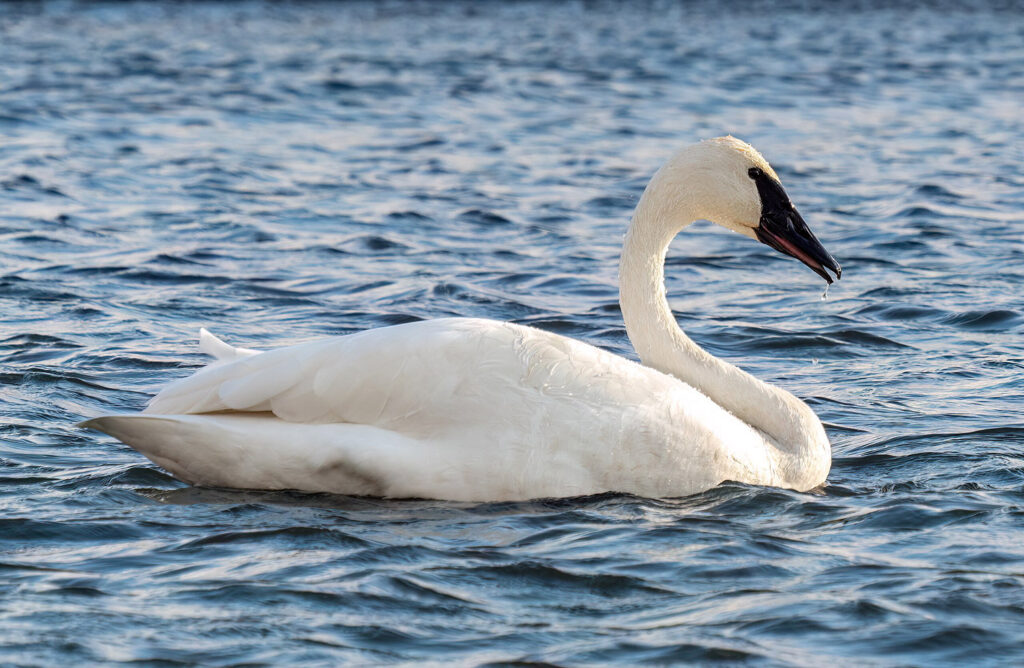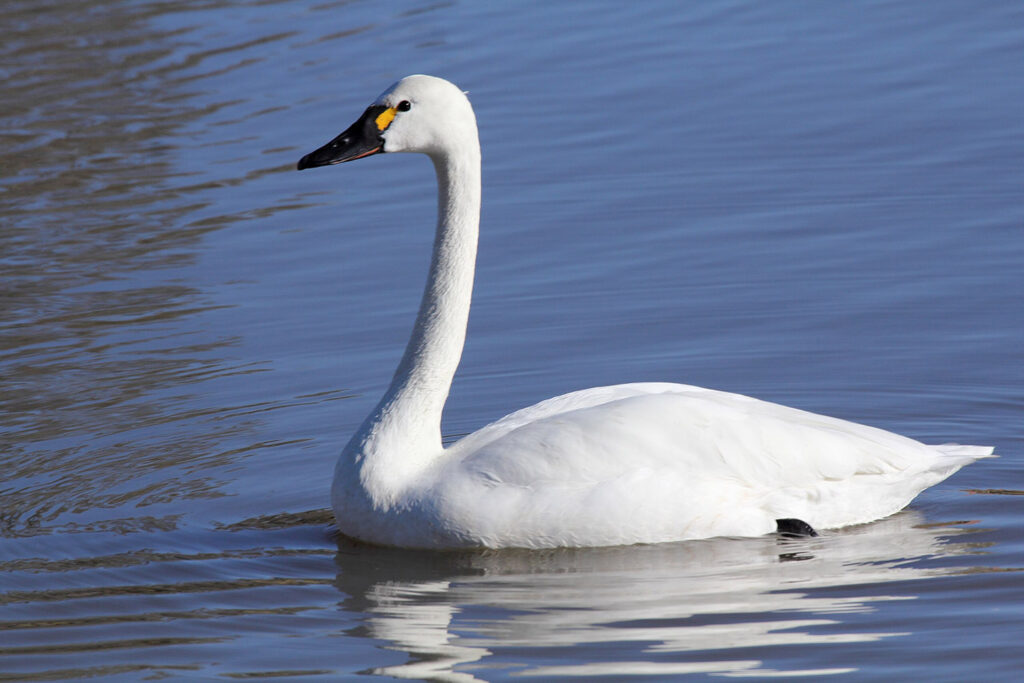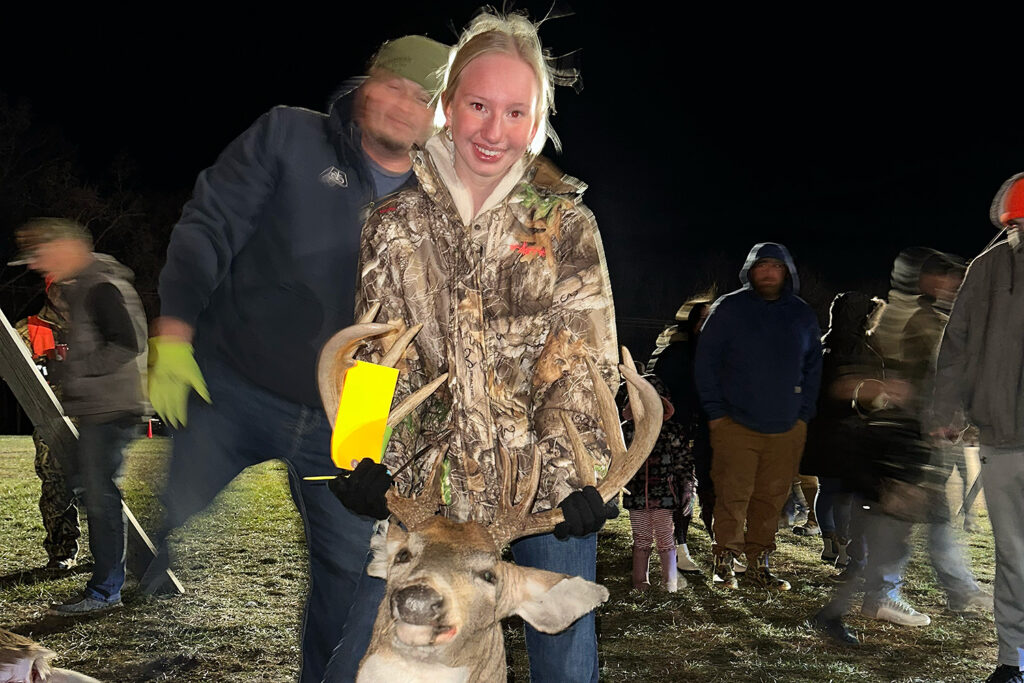I live on a slow, shallow stretch of one of Michigan’s rivers, and I’ve watched a pair of mute swans make a home from my living room. They come every year to nest on a weedy little island, barely above water level. The female swan (called a pen) sits stoically on her nest, waiting for her babies (cygnets) to hatch. The male (cob) guards the island like the bouncer at a seedy bar. Anything that gets too close—be it a duck, a goose, or even a curious dude—learns a lesson. I’ve seen the cob chase geese around the river, peck and bite kids, and try to drown ducks.
I had admired their elegance and commitment to protecting their nest. Their white feathers are beautiful, and they move across on the water like royalty. But then I learned the ugly truth. Despite their regal appearance, they’re invaders, an invasive species wreaking havoc on our waterways.
Mute swans are deceptive that way. They look noble, but they’re the mob bosses of the wetlands. Imported in the late 1800s from Europe, mute swans were intended to be living lawn ornaments for parks and larger private estates. This was common in those days—find a species you like from another country, and bring it over. We’ve done it with everything from carp to autumn olives. And like those species, over time, these large birds spread. They’ve gone from one captive pair to over 15,000, growing by almost 10% every year. These seductive swans have established themselves as part of Michigan’s wildlife landscape, and we’re dealing with the fallout.
Michigan has two native swan species. Both the trumpeter swan and the tundra swan call Michigan their part-time home. The trumpeter swan, North America’s largest waterfowl, was once almost extinct. We’ve slowly built their population back up thanks to very focused conservation efforts, but their aggressive cousins are a big threat. Trumpeters have been slowly re-establishing themselves, but the population is not stable.

The tundra swan, another migratory species, faces similar challenges. As mute swans claim more nesting ground, they push out native species, including ducks, geese, and our own swan species. It’s a turf war that’s quietly happening on our waterways, and native birds are losing.

One problem with muties is their aggression, especially during the nesting season. I’ve seen it countless times. These birds go from zero to psycho in the blink of an eye, outcompeting native waterfowl like terns and loons. Mute swans are also incredibly destructive. Each eats 4 to 8 pounds of plants a day, tearing up native vegetation and disrupting the habitats of other waterfowl. Entire wetland ecosystems are being destroyed by these birds that are both beauty and beast.
You’d think a bird like this would be on the menu for some Michigan predators. They’re not exactly hard to find, but mute swans are often too much trouble to mess with. They’re big, with a more than 7-foot wingspan and weighing more than 25 pounds, and mean—not an easy meal for foxes or coyotes. Consequently, their population has exploded across our state.
In response, the state has begun trying various strategies to manage them. Law enforcement personnel and landowners with nuisance permits can use lethal force. They have also tried nest destruction and coating swan eggs with corn oil to prevent oxygen from entering. But it’s a tricky situation. Public sentiment often isn’t on the side of removing these pests. It makes sense: Most people don’t know that mute swans are a problem, plus they’re beautiful.
Balancing PR with ecological needs isn’t easy. Many of us, myself included until I learned better, love these birds. DNR efforts to cull numbers have sparked outrage. Stories about killing lake-living families’ beloved swans make for great headlines. It’s the same tension we see in other wildlife management areas. The cougar hunting debate raging in Colorado right now is a great example. Mountain lions are necessary to have on the landscape, but they need to be managed. Too few, and things get out of whack. Too many? That’s a big problem.
Maryland went after mute swans in the early 2000s. With a population reaching 4,000, the state enacted an aggressive campaign, including culling birds, oiling eggs, and destroying nests—resulting in significant public outcry. People were mad, but by 2012, the population was down to under 100 birds. New York tried to eliminate them all but walked the plan back after significant backlash. Michigan finds itself at a crossroads. Like Maryland, our DNR has authorized an intense plan for reducing the state’s population, but it needs to follow through. Maryland stuck to its guns and saw results. We need to do the same.
It’s still hard for me to shake the mental image of those swans I’ve built in my head over the last decade, watching them on the river. Their beauty is deceptive. While it might be difficult to manage them without stepping on a few toes (or wings), it’s a battle we can’t ignore. If we’re not careful, their silent invasion will reshape our wetlands before we even realize what’s happened.
James Zandstra is an experienced outdoorsman with a passion for the Mitten State. Follow his work on X @TheFairChase1.



